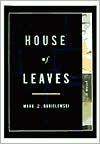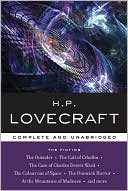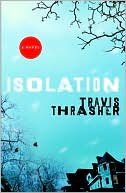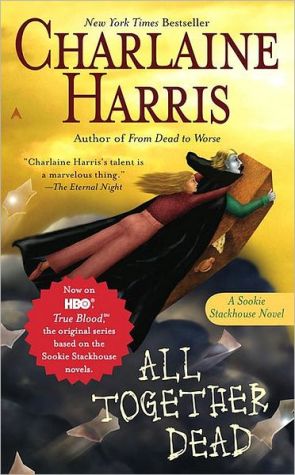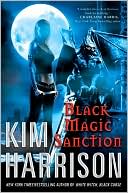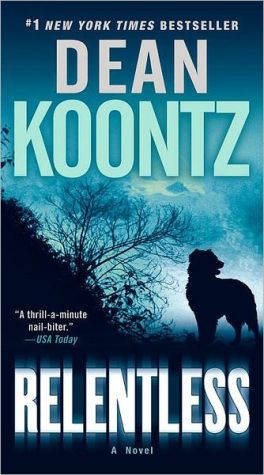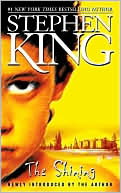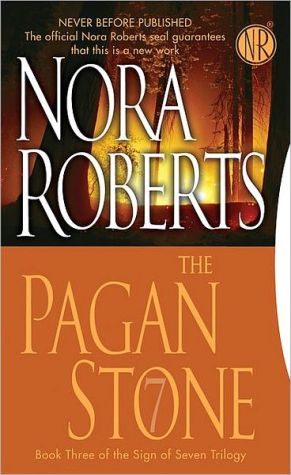House of Leaves
Years ago, when House of Leaves was first being passed around, it was nothing more than a badly bundled heap of paper, parts of which would occasionally surface on the Internet. No one could have anticipated the small but devoted following this terrifying story would soon command. Starting with an odd assortment of marginalized youth — musicians, tattoo artists, programmers, strippers, environmentalists, and adrenaline junkies — the book eventually made its way into the hands of older...
Search in google:
Years ago, when House of Leaves was first being passed around, it was nothing more than a badly bundled heap of paper, parts of which would occasionally surface on the Internet. No one could have anticipated the small but devoted following this terrifying story would soon command. Starting with an odd assortment of marginalized youth — musicians, tattoo artists, programmers, strippers, environmentalists, and adrenaline junkies — the book eventually made its way into the hands of older generations, who not only found themselves in those strangely arranged pages but also discovered a way back into the lives of their estranged children.Now, for the first time, this astonishing novel is made available in book form, complete with the original colored words, vertical footnotes, and newly added second and third appendices.The story remains unchanged, focusing on a young family that moves into a small home on Ash Tree Lane where they discover something is terribly wrong: their house is bigger on the inside than it is on the outside.Of course, neither Pulitzer Prize-winning photojournalist Will Navidson nor his companion Karen Green was prepared to face the consequences of that impossibility, until the day their two little children wandered off and their voices eerily began to return another story — of creature darkness, of an ever-growing abyss behind a closet door, and of that unholy growl which soon enough would tear through their walls and consume all their dreams.Library JournalWhen Johnny Truant attempts to organize the many fragments of a strange manuscript by a dead blind man, it gains possession of his very soul. The manuscript is a complex commentary on a documentary film (The Navidson Record) about a house that defies all the laws of physics. Navidson's exploration of a seemingly endless, totally dark, and constantly changing labyrinth in the house becomes an examination of truth, perception, and darkness itself. The book interweaves the manuscript with over 400 footnotes to works real and imagined, thus illuminating both the text and Truant's mental disintegration. First novelist Danielewski employs avant-garde page layouts that are occasionally a bit too clever but are generally highly effective. Although it may be consigned to the "horror" genre, this novel is also a psychological thriller, a quest, a literary hoax, a dark comedy, and a work of cultural criticism. It is simultaneously a highly literary work and an absolute hoot. This powerful and extremely original novel is strongly recommended for all public and academic libraries.--Jim Dwyer, California State Univ. Lib., Chico Copyright 2000 Cahners Business Information.
\ From Barnes & NobleBarnes & Noble Discover Great New Writers\ House of Leaves is a multilayered intersection of wild ideas, ten years in the making, from Mark Danielewski. It is also the story of a seemingly normal house gone wild. The novel intertwines the narratives of two haunted individuals: Zampano, a blind man whose strange manuscript is found in his apartment when he dies, and Johnny Truant, the tome's discoverer and narrator of House of Leaves. \ Zampano's manuscript is a critique of a documentary film called "The Navidson Record," by Pulitzer Prize-winning filmmaker Will Navidson. The filmmaker had just moved his family into a house on Ash Tree Lane and hadn't even had the chance to unpack before the strangeness began. Navidson discovered what at first seemed like an odd prank perpetrated by a psychotic carpenter: Behind a closet door, a hallway with smooth black walls had suddenly appeared. This prompted Navidson, ever the pragmatist, to do some measurements. He learned that the inside of the house was larger than the outside. And the hallway did not just remain a hallway—it was growing rapidly, and there was a deep growl emanating from the darkness that was unlike anything he'd ever heard. Partly out of habit, but also sensing that nobody would ever believe his story, Navidson captured everything on film.\ Realizing that he was out of his league, Navidson assembled a team of professional hunters and explorers, four fearless men who could navigate any terrain and deal with any physical hardship. Armed with the best high-tech equipment, cameras, and plenty of supplies, they ventured into the dreamlike interior of the house. The discovered that the house was mutating, spawning a web of incredibly complex, pitch-black passageways and cavernous spaces. Dimension and space shifted constantly, becoming fluid and dangerous. The house humbled the team, rendered their equipment useless, and turned them against each other.\ Danielewski's descriptions of the explorations of the interior are amazing (think Into Thin Air in a surreal dreamscape). As the house mutates, so does Zampano's manuscript; the text takes on a life of its own, and the layout responds. The film critique is heavily and amazingly footnoted in a way that blurs the line between artifice and reality. The house is completely baffling, Johnny is sliding into madness, and there is something evil that haunted Zampano and the house on Ash Tree Lane and now stalks Johnny. His transformation is also extraordinary: He goes from being an apathetic, hedonistic, eviction-dodging tattoo shop apprentice to a physically wasted, haunted shadow of his former self.\ House of Leaves is an incredible blend of mystery, madness, and terror that makes the reader uncomfortable in an entirely new and fascinating way. The novel asks an important question: What are we afraid of? It goes after the deeper origins of fear and stays with us—in our thoughts and dreams—long after we've turned the last page.\ —Sophie Cottrell\ \ Bleak House\ Can a book be a labyrinth? Or, to follow the premise of Mark Z. Danielewski's genre-bending debut, can a book about a book about a film be anything else? House of Leaves is both vast and claustrophobic, crammed with minutiae (footnotes, appendices, poems and letters, and layout trickery) yet cored by a deep, absorbing emptiness, a deliberate void that accommodates, even incorporates, each character's—perhaps even each reader's—expectations, quirks, and fears.\ At the novel's heart is "The Navidson Record," a documentary collage made by Will Navidson, prizewinning photographer, of his attempts to explore the impossible. A bizarre hallway—dark, cold, and haunted by a menacing growl—has suddenly appeared in his new home, and within its darkness lies an ominous architecture that mutates, viruslike, with every trip inside, offering a deadly threat to Navidson's wife, Karen, and their young children; to his brother Tom, whose loyalty Navidson abuses; to his friends who become involved in the quest; and finally and most directly, to himself. For Navidson cannot stop his explorations; he can't stop wanting to see.\ House of Leaves is also the "book," painstakingly compiled by a strange old man named Zampanò, acquired after his death by Johnny Truant, an apathetic slacker mired in drugs and sad sex. Johnny's obsessive immersion in the manuscript echoes the black-hole threat of the hallway to Navidson; both are caught then consumed by the need to go deeper than safety, or sanity, can support; both will risk their lives in pursuit of the secret of the hallway, and both will be damaged by the experience in ways they cannot anticipate or escape.\ Comparisons with The Blair Witch Project will occur to some; others will be reminded of Thomas Pynchon or David Foster Wallace. But Danielewski has done something different: He has remade the haunted house story into a metaphor for dread itself: its smothering darkness, its infinite expansion, the way it takes hold within us, where we think we are most at home. He makes palpable the animal weight of the unknown, terrifying in its formlessness, defined by its ability to morph; he uses perception as a tool to mystify, the building blocks of text to make a structure without walls.\ This is definitely not a novel for everyone; the casual reader will find his or her patience strained by the narrative shifts, the heavy footnoting, and the typographic landscape itself. But for readers willing to commit themselves to a skewed adventure, House of Leaves offers an experience of darkness, a walk into Nothing with a camera in our hands.\ \ \ \ \ \ Library JournalWhen Johnny Truant attempts to organize the many fragments of a strange manuscript by a dead blind man, it gains possession of his very soul. The manuscript is a complex commentary on a documentary film (The Navidson Record) about a house that defies all the laws of physics. Navidson's exploration of a seemingly endless, totally dark, and constantly changing labyrinth in the house becomes an examination of truth, perception, and darkness itself. The book interweaves the manuscript with over 400 footnotes to works real and imagined, thus illuminating both the text and Truant's mental disintegration. First novelist Danielewski employs avant-garde page layouts that are occasionally a bit too clever but are generally highly effective. Although it may be consigned to the "horror" genre, this novel is also a psychological thriller, a quest, a literary hoax, a dark comedy, and a work of cultural criticism. It is simultaneously a highly literary work and an absolute hoot. This powerful and extremely original novel is strongly recommended for all public and academic libraries.--Jim Dwyer, California State Univ. Lib., Chico Copyright 2000 Cahners Business Information.\ \ \ Kelly[A] wonderful first novel, House of Leaves, is a vast exploration and meditation on the paradoxical spaces that open out from -- or as -- our awareness. To make sure the word ''meditation'' doesn't daunt you into a coma of respectful abstention, let me say right off that his book is funny, moving, sexy, beautifully told, an elaborate engagement with the shape and meaning of narrative.\ —The New York Times Book Review\ \
